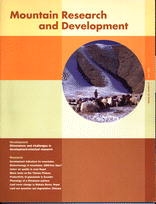Olympic Games as Performance and Public Event. The Case of the XVII Winter Olympic Games in Norway, edited by Arne Martin Klausen, Berghahn Books, Oxford, 1999. 272 pp. US$19.95, £UK 14.95. ISBN 1-57181-203-2.
This collection of essays reports largely on anthropological research carried out leading up to and during the XVII Olympic Winter Games in Lillehammer, Norway, in 1994. This event was the most expensive and complex event ever to take place in Norway. Arne Martin Klausen, the editor, suggests that perhaps the only other occasions in Norwegian history to attract so many spectators were the celebration of peace in 1945 and the return from exile of King Haakon the same year. Sporting, athletic, and economic aspects aside, with the scope of the Games formulated by the organizers as ‘a showcase of modern Norwegian society,’ the cultural dimension became critical to the debate about the importance of Norway as the host.
As the organization of both the Games themselves and the nonsporting events, such as artistic, musical, and theatrical performances as well as exhibitions and festivals proceeded, Norwegian culture and a sense of Norwegian identity and way of life became central. The Winter Olympics would help put Norway on the international map, and the country would have an opportunity to show the world that it was a dynamic modern, sophisticated nation yet one firmly rooted in tradition. The Lillehammer Games were thus ripe for study by anthropologists. Indeed, the modern/traditional dichotomy running through Norwegian political and cultural discourse is a recurring theme of this volume. As Klausen observes in one of his two contributions, the ceremonies and peripheral events and exhibitions relied heavily on Norwegian folklore and traditional symbols, yet the Games themselves were very much a part of the Norwegian desire for development as a modern industrial nation.
The book as a whole is the product of a team of researchers, who between them carried out fieldwork inside the local organizing committee, the International Olympic Committee, and during the Lillehammer Games themselves, and at the previous Winter Games in Albertville. Overall, the authors make a contribution to wider anthropological debates about modern identities, global spectacles and festivals, the invention of tradition, and sport and leisure, but they also demonstrate the importance of studying the Olympic Games in their own right. The Games (both summer and winter) contain within them enough to inspire the jaded anthropologist who has despaired of finding those exotic rituals, systems of classification, and colorful, dramatic events that seem to have all but disappeared from remote jungles and the tundra. Methodologically, too, the book shows how anthropology has responded to challenges posed by working in modern cultural settings and complex social contexts for which anthropologists have had to build up a new theoretical vocabulary.
The Olympics are all about flux, movement, modernity, and fleeting moments. One problem for the anthropologist is how to capture and represent all of this, especially if the traditional role of the anthropologist is as an interpreter involved in cultural translation. But anthropologists are suitably equipped for these challenges, as they are (and also have been) in a constant state of movement in the field as well, negotiating and interpreting shifts and changes in daily life. Rather than studying in communities, anthropologists study in networks (which makes the traditional method of participant observation almost redundant), and the Olympic Games seem an especially good example of how the researcher must be prepared to constantly shift between being an active participant in people's daily lives and keeping an eye on everything else going on at the same time.
Apart from their relevance to issues of generic anthropological interest and concern, the essays in this volume also offer an important insight into contemporary Norwegian culture. In parts, the tone, content, and style of the contributions verge more on sociology and even cultural studies rather than anthropology—with contributors discussing grand themes such as the Olympics as megadrama, the production of Norwegian culture for domestic and foreign gazes, gender images, and heroic masculinity. Two essays in particular stand out: Roel Puijk discusses the opening ceremony of the Games and remarks on the importance of this for national representation and promotion, while Eduardo Archetti explores the intermingling between individuality, gender, and masculinity at the previous Games in Albertville. While Puijk considers what images of Norway were presented at the opening ceremony (and compares the national and foreign media interpretations), Archetti's chapter examines Olympic ideologies and ideals but is concerned similarly with images (in this case, of masculinities). Both are concerned, in their own way, with national stereotypes—of both the host countries and of individual competitors.
Overall, this book has potential to be widely used, especially on undergraduate courses in sociology, anthropology, cultural studies, sports studies, and gender studies. Furthermore, it offers insight into the very nature of the Olympic Games and the International Olympic Committee as well as contested national versions of the benefits, virtues, and drawbacks of Olympism.





